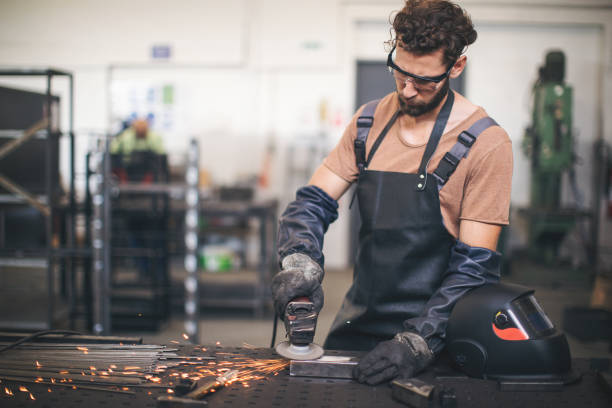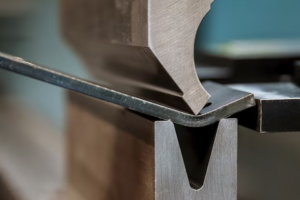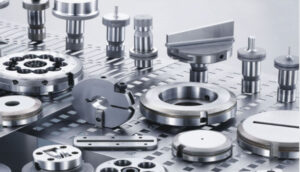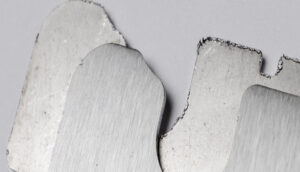Sheet metal fabrication is a big industry in itself today. It involves cutting, welding, moulding and assembling metal sheets.
Earlier it was done by manual labour but today we have highly specialized gears and tools to alleviate the workload and get more favorable outputs. Since metal fabrication is a multi-stage process, it requires advanced technology and machine-driven expertise to handle the growing workload of industry tries.
In big industries, it is nearly impossible to carry out tones of metal cutting, moulding and assembling with the help of manual labour and hence it is necessary to bring in machines to help them carry out their task easily. Based on the kind of requirement, different kinds of machines are used to carry out the task.
One of the most complicated stages of metal sheet fabrication is welding because it involves a special straightening process, sand covering while cooling, using a stout fixture or welding in a staggered manner to prevent wrapping or other abnormalities.
Straightening defects can be removed by using an oxy-acetylene torch where heat is applied gradually to the metal to remove abnormalities.
The final part is wrapped up in sandblasting, priming and painting. Sharp breaks are also used in sheet metal fabrication to create sharp bends and angles within the metal.
Machines and Tools are Used in Sheet Metal Fabrication
Let’s look into some of the widely used machine and tools that are essential for sheet fabrication:
1. Lathe Machine
This is a multi-purpose machine that is capable of cutting, welding, knurling, drilling, threading, facing and turning. Its main task is to rotate the workpiece to keep the process moving stage by stage.
2. Grinding Machine
These are used to provide smoothness to metal sheets. An abrasive material is rotated at a high speed which removes the extra metal pieces from all the sides and hence provides a polished and smooth surface.
3. Drilling Machine
This is a widely used machine and is found in nearly every household. It is famous for its multi-purpose and easy usage. Other than doing repairing work, it is used for drilling into metal sheets, concrete and cement.
4. Broaching Machine
It is generally of two types – linear and rotator and it is used to remove the material from a workpiece with the help of broach. It supports the ingenious process of sheet production.
5. Shaper Machine
These machines uses a single-point cutting edge, moving linearly, to cut metal sheets in required sixes. They are easy to use and an important part of the sheet production process.
6. Saw Machines
A saw machine consists of a rotating blade that is used to cut metals into two pieces. They give a fine finish and are used in the primary stage of metal sheet fabrication. Hack saw, Circular saw and Band saw are some kinds of them that are widely used.
7. Planer Machine
Planer machine is similar to shaper machines, the only difference being, the cutting tool is static and the workpiece is made to rotate in linear motion. It is usually larger than the shaper machines.]
8. Hobbing Machine
This is an advanced variation of the milling machine. These are special kinds of cutting tools that are used to make spur gears and splines. It is an inexpensive method and extensive in practice.
9. Shearing Machine
They are special kinds of cutting machine that does not form chips or residual materials. These are especially used to cut metal sheets into fine pieces, blanking and piercing.
10. Drill Press
It is a transformed version of the hand drill machine. They are more stable and easily workable. They help in drilling with more accuracy and precession.
11. Hem Band Saw
It is a highly specialized cutting tool that is used to cut metals at an angle of 90, 60 and 45 degrees. It is more stable and you can get more control over it due to its adjustable pressure, blade tension and guide arm.
The worker can easily use it to observe the cutting while the machine moves due to its manual control feature, located at the front.Iron Worker This metal is widely used in metal and steel fabrication as well.
It is a vital machine and it can perform several tasks like shearing, notching, cambering, punching, bending flat plates, rods, bars and channels. This one tool can do half of your job and thus it is widely used.
12. Iron Worker
This metal is widely used in metal and steel fabrication as well. It is a vital machine and it can perform several tasks like shearing, notching, cambering, punching, bending flat plates, rods, bars and channels. This one tool can do half of your job and thus it is widely used.
13. Press Brake and Cambering Machine
A press brake is used to convert metal sheets into girders, channels, sections and angles. The process is simple, it bends the metal sheets by clamping them in between a punch and a die pair.
A cambering machine, just like a press brake, is used to change the shape of the sheet. But instead of forming sections and beams, it transforms them into vertical and horizontal arcs.
14. Cold Saw
It is one of the most inexpensive cutting machines because it is a hand-held and portable saw machine.
The blades rotate at a high speed to provide a smooth finish. It works on an electric motor and a circular, toothed blade attached to it.
15. Oxy- Gas Torches
This tool uses various fuel gases and oxygen to cut and weld metal sheet component. it is also used in steel sheet fabrication. The fuel used is gasoline, propylene, acetylene, and hydrogen.
They are ideal for small scale metal fabrication. They are also used to address problems like straightening defects.
16. Magnetic Drill
A magnetic drill device is used to drill holes in metal sheets and structures. it is useful in case of heavy metal drilling, which can’t be lifted easily. It is equipped with a permanent magnetic base (Mag base)
Metal sheet fabrication is a multi-stage process involving complex structural and operational processes.
These machines help in cutting down labour costs, saving time and money as well.
Using them to carry out metal fabrication will give a more stable and fine output. You can choose a few of them from the above-given list as per your requirement to boost your processing.




